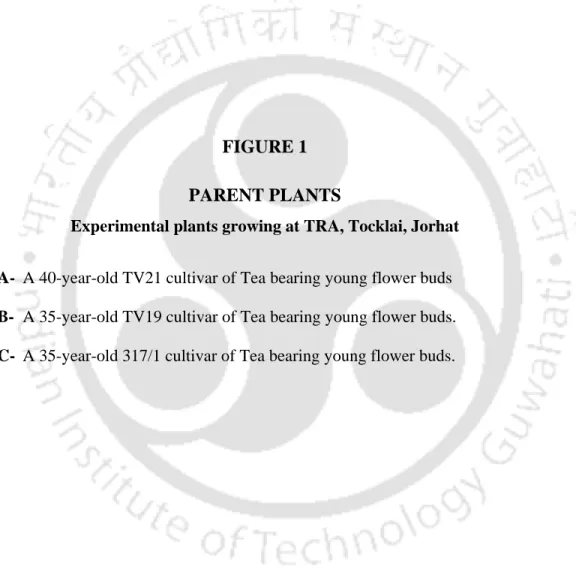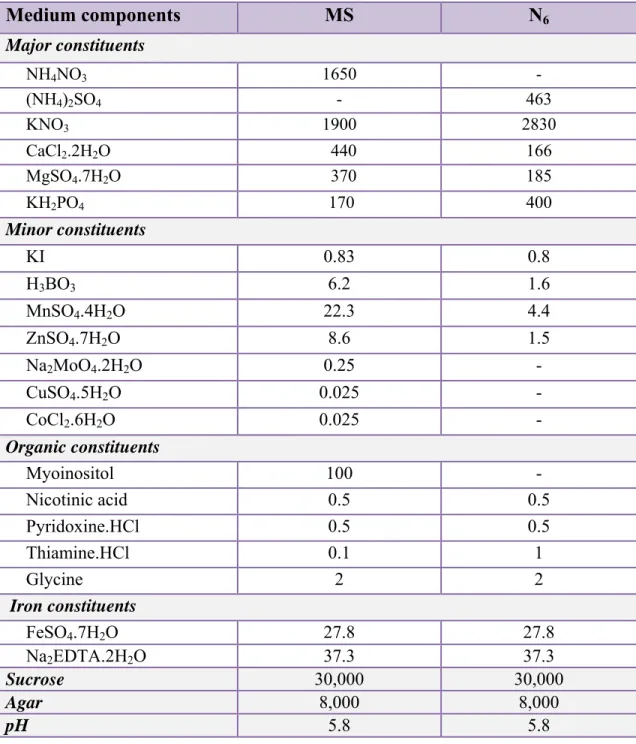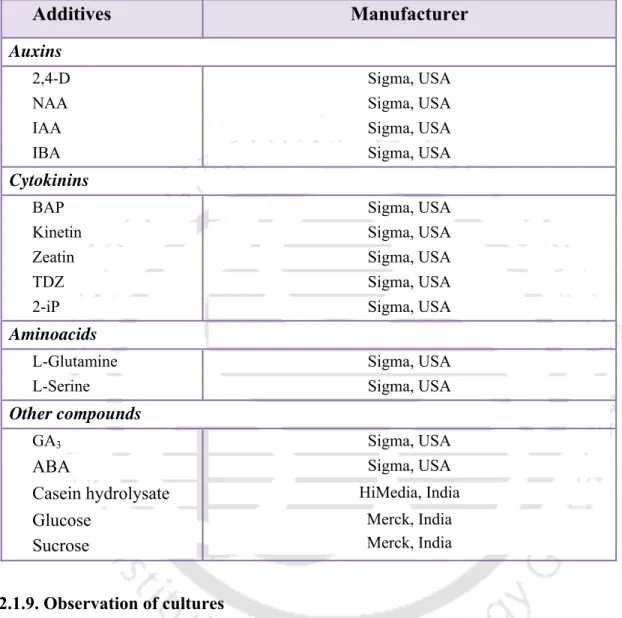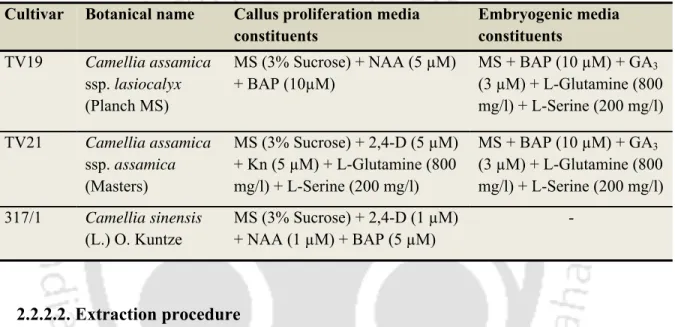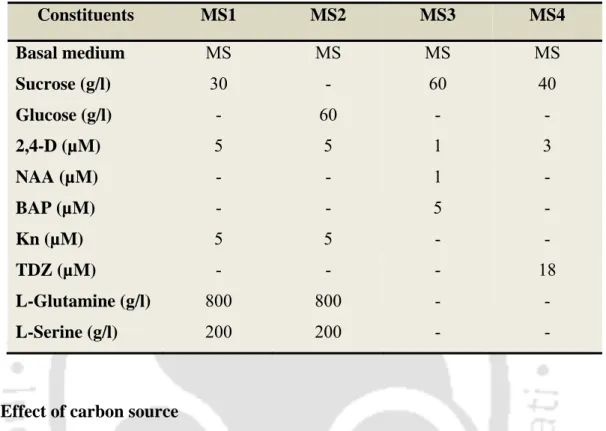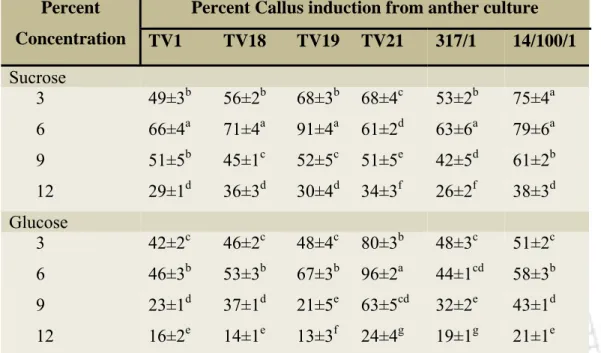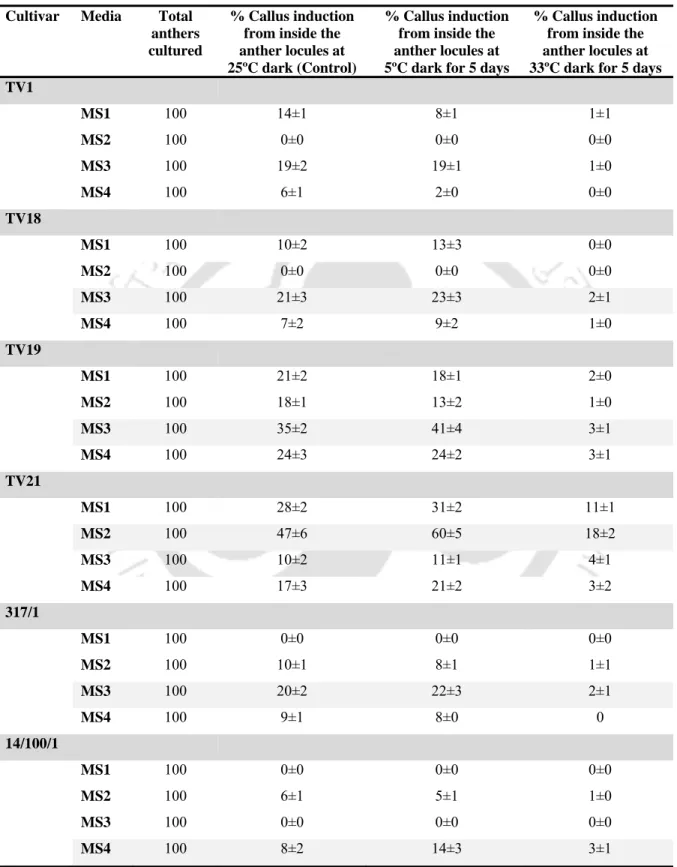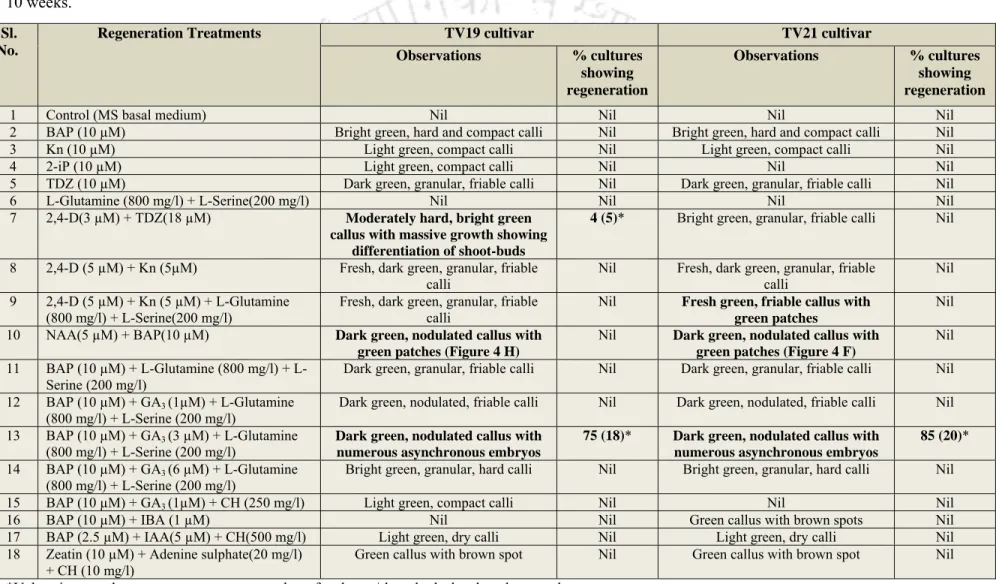Therefore, the aim of the present study was to establish androgenic tea lines from anthers in vitro. Chapter 5 sheds light on the main highlights of the current work and its future scope. This is followed by the appendix in which the taxonomic classification of the plants studied is given.

LIST OF FIGURES
LIST OF TABLES AND GRAPHS
LIST OF ABBREVIATIONS
LIST OF UNITS
Introduction and Literature Review
- HISTORICAL IMPORTANCE, ORIGIN AND DISTRIBUTION
- BOTANICAL ASPECTS
- ECONOMIC IMPORTANCE, HEALTH AND OTHER BENEFITS Tea is the second most widely consumed beverage in the world after water (Chaturvedula
- CONVENTIONAL BREEDING APPROACHES IN TEA
- TISSUE CULTURE STUDIES
- Micropropagation
This is because of the scientific evidence that indicates preventive action in a number of human disorders (Chopade et al., 2008). From Europe, tea cultivation spread to the African countries at the end of the 19th century. The majority of the beneficial effects of tea are attributed to its polyphenolic content and purine alkaloids (Peng et al., 2008).
Biotechnological investigation in tea through tissue culture
- Haploid production
A report is also available on the comparison between Thidiazuron (TDZ) and BAP for their effect on micropropagation (Mondal et al. in 1998). Genotype and physiological status of the parental plants directly influence somatic embryogenesis (Vieitez, 1994; Mondal et al., 2000b). Thus, several factors such as external nutrients, supply of PGRs and culture conditions will improve the conversion rate of tea somatic embryos (Mondal et al., 2004).
Methods to produce haploids under in vitro conditions
- SECONDARY METABOLITES
- OBJECTIVES OF THE PRESENT STUDY
The major classes of flavonoids found in tea are flavanols and flavonols (Balentine et al., 1997; Wang et al., 2000). These are colorless, water-soluble compounds that contribute the bitterness and astringency to green tea (Balentine et al., 1997). Flavonol glycosides are present in tea up to 2 to 3 % of the water-soluble extracts (Balentine et al., 1997).
Materials and methods
- MATERIALS
- METHODS 1. In vitro culture
- Initiation and establishment of anther cultures
- Pre-treatment
- Callus multiplication
- Callus regeneration
- Embryo maturation and germination
- Culture media
- Inoculation
- Culture conditions
- Observation of cultures
- Scanning electron microscopy
- Ploidy analysis
- Antioxidant activity
- Secondary metabolite production 1. Preparation of sample solution
- Batch kinetics of cell suspension cultures 1. Selection of elite cell line
- Statistical analysis
Stock solutions (1 mg/ml) of crude extracts were prepared in appropriate solvents. The leaves of mother plants of three cultivars grown in the field served as controls. In general, the pH of the culture medium plays a key role in the growth of cell biomass.
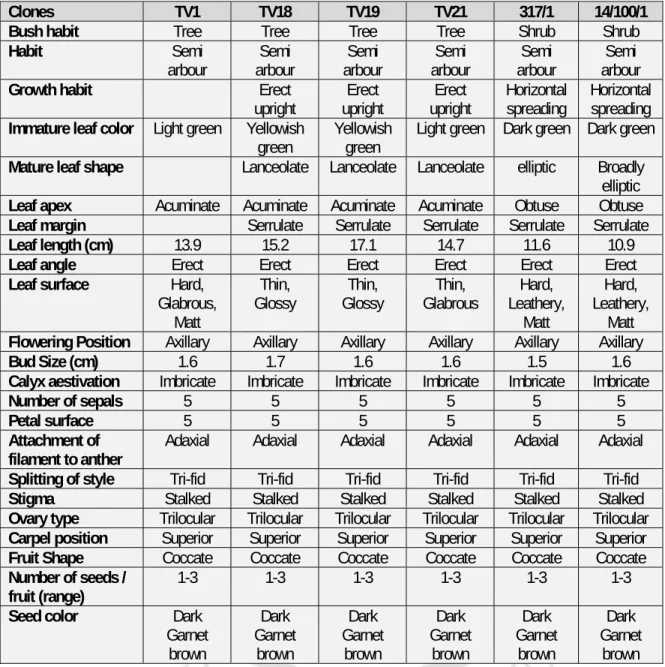
Results
- ANTHER CULTURE
- Callus induction
- Callus multiplication and maintenance
- Regeneration from anther callus
- Embryo maturation, germination and plantlets development i. Morphology of anther derived embryos and embryo maturation
- embryos having abnormally thick plumular region with well defined radical end (Figure 11 Ai-iii)
- embryos with no cotyledons at the plumular region but with normal developed radicular end (Figure 11 B)
- embryo with completely closed, green, rounded, fused cotyledons at the plumular end and well developed radicular end (Figure 11 C)
- embryo with multiple, green color, fused cotyledons forming cup-shaped structure (Figure 11 D)
- Flower-shape, abnormal embryo with multiple, green color, fused cotyledons (Figure 11 E)
- Ploidy analysis
- ANTIOXIDANT ACTIVITY
- SCREENING OF ANDROGENIC CULTURES FOR SECONDARY METABOLITE PRODUCTION
Regardless of cultivars, continuous dark incubation of anther cultures at 25±2ºC was more than fourfold favorable for callus induction compared to those kept continuously in diffuse light at 25±2ºC (Tables 3.3 to 3.8). Best response was observed in control at 25 °C temperature with dark incubation, followed by cold pretreatment (5ºC for 5 days in the dark) and heat pretreatment (33ºC for 5 days in the dark) (Tables 3.3 to 3.8). Although both the two factors, media and temperature pretreatments, are significant (p-value <0.05) in these two cultivars, temperature pretreatments are more significant than reacted media (Tables 3.5 and 3.6).
In vitro calli and embryos of the three taxa, developed on different media (see Table 2.5), were subjected to extraction with hot water and different organic solvents, methanol, ethyl acetate and hexane. The percentage yield of extracts (Table 3.13) was calculated using the formula as described in Materials and Methods. IC50 values of reference standards and each extract were calculated from the linear equations of the DPPH inhibition curves and are represented in Table 3.14 and Table 3.15, respectively.
Hot water extracts had significantly very high antioxidant activity followed by methanol, ethyl acetate and hexane (Table 3.15). To carry out comparative studies, ascorbic acid, catechin, epicatechin, epigallocatechin gallate, gallic acid and vanillic acid were used as reference standards and their IC50 values are detailed in Table 3.14. As shown in Table 3.16, regression analysis of the calibration curve data points showed excellent correlation coefficient (R2). a) Method optimization for separation of compounds.
The equation generated from the curve (Table 3.16) by external standard method was used to calculate the amount of compounds present in the crude sample.
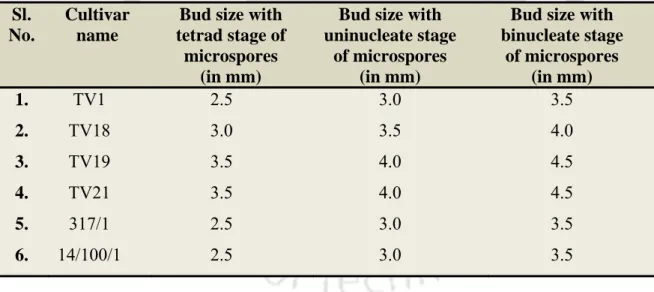
E, F). A very distinct and clear separation of five compounds can be observed
- Identification and quantification of compounds by HPLC
- Analysis of metabolites by mass spectra
- KINETICS OF CELL SUSPENSION CULTURE 1. Establishment of cell suspension culture
- Effect of sucrose concentration
- Effect of pH
- Effect of agitation speed on cell biomass increase and cell viability
- Kinetics of cell growth and nutrient uptake
- Chromatographic detection of secondary metabolites
Cell suspension culture is a simple system for studying growth and production kinetics that can help evaluate and implement optimal conditions for the production of many high-value medicinal compounds in good quantities. Since total metabolite production was also higher in these calli, cell suspension cultures were established to perform kinetic growth studies. The kinetic profile of cell growth, calculated according to the mass of fresh and dry cells, is shown in graph 3.10.
Cultures were observed to remain in the lag phase until day 3. Typical profiles of substrate consumption (phosphate, nitrate and sucrose) during cell suspension cultivation are shown in graph 3.11. It was found that the pH, after a slight decrease in value, dropped sharply between 9-24 days and then slightly increased after 27 days (Graph 3.11).
The increase in the pH after the 27th day can be attributed to the release of intracellular substances into the medium. Therefore, it can be speculated that complete utilization of sucrose from the medium led to the onset of decline phase of cell growth in suspension culture and it was the most important limiting nutrient for cell growth. It was found that the concomitant synthesis of all the involved secondary metabolites in the cell suspension was growth associated and showed an increase with the increase in cell biomass (Graph 3.12).
In general, metabolite production in cell suspension cultures was higher than in callus cultures, but lower than in embryo cultures.

Discussion
- TISSUE CULTURE STUDIES
- ANTIOXIDANT ACTIVITY
- SECONDARY METABOLITES
However, there are not many successful reports of microspore culture in woody plants (Chaturvedi et al., 2003). However, the presence of extraneous tissues (e.g. the anther wall) makes this a messy system for cell biology and other precise studies (Forster et al. 2007). Anthers from the first flush of flowers are generally more responsive (Shtereva et al. 1998; Srivastava and Chaturvedi, 2011).
The conversion between the two modes can be enhanced by different abiotic stresses (Barret et al., 2004), for. In the Arabidopsis genome, most of the genes of AUX/IAA gene family are upregulated by auxin (Abel and Theologis, 1996; Hagen, 2001; Overvoorde et al., 2005). Whole anther pretreatment results in changes in cell wall properties of anther tissue (Wang et al., 2000).
The presence of gibberellic acid (GA3) in the medium inhibited embryogenesis in carrot (Tokuji and Kuriyama, 2003), citrus (Kochba et al., 1978) and geranium (Hutchinson et al., 1997). Flavonoid (Catechin) with an O-dihydroxy or trihydroxy B ring and gallate ester group at the 3 position of catechins (ECG and EGCG) have very high antioxidant activities (Sang et al., 2002). It was generally accepted that dedifferentiated cultures appeared to be less active as antioxidants (Grzegorczyk et al., 2007).
Currently, HPLC (High-Performance Liquid Chromatography) is the most useful approach for the routine analysis of non-volatile tea constituents (Finger et al., 1992).
- BATCH KINETICS
Singh and Chaturvedi (2012) reported that in Spilanthes, cell growth was faster in liquid medium than in semi-solid medium. The same pattern was observed in the current study in tea, where cell growth was faster in liquid medium than in calli grown on semisolid medium. As a rule, 2,4-D promotes active proliferation of cells and the rate of cell growth depends on the 2,4-D concentration in the medium and also on the characteristics of the cultivar (Butenko, 1999).
In general, it has been observed that the rate of cell growth in cultures is directly related to the sucrose concentration in the medium (Grover et al., 2012). In the current study, 3% sucrose was optimal for cell suspension culture. 2012) also observed maximum accumulation of biomass in tea suspension culture in the presence of 3% sucrose. The effect of pH was observed in this study and pH 5.8 was observed to be the best for maximum biomass accumulation in tea suspension culture.
It is mainly responsible for mixing the plant cells in the environment and, thus, facilitating the homogeneous uptake of nutrients and also ensuring an adequate supply of O2 and CO2 (Singh et. Similarly, Singh and Chaturvedi (2012) and Srivastava et al. 2011) observed maximum biomass accumulation and cell viability at 120 rpm. In living cells, it is cleaved through esterase activity freeing polar for parts ie.
Therefore, it can be speculated that the complete use of sucrose from the medium caused the beginning of the decline phase of cell growth in suspension culture, which was the main limiting nutrient for cell growth.
Conclusions and future prospects
Investigation of the interaction between abscisic acid (ABA) and excess benzyladenine (BA) on shoot formation in tea (Camellia sinensis L.) tissue culture. Generation of dedifferentiated callus of haploid origin from unfertilized ovaries of tea (Camellia sinensis (L.) O. Kuntze) as a potential source of total phenolics and antioxidant activity. Effect of concentration of plant growth regulators on shoot tip culture of tea plant.
Evaluation of chemical and physical parameters for callus induction from anther cultures of tea (Camellia sinensis (L.) O. Kuntze). Effect of origin of explants on root differentiation and its varietal variation in tea plant tissue culture. Stimulatory effect of elevated temperatures on meristemoid callus production from pollen culture of tea (Camellia sinensis (L.) O. Kuntze).
APPENDIX
Effect of donor seedling age and cytokine on organogenesis from in vitro cotyledon culture of Citrullus lanatus (Thunb.) Mastrum & nakai cv. In vitro production of haploid plants via embryogenesis in anther cultures of tea Camellia assamica ssp. Effect of physical and chemical factors on the induction of callus and proliferation through in vitro androgenesis in Camellia sinensis (L.) O.
Rakhi Chaturvedi, Vijay Kumar Mishra and Rashmi Rekha Hazarika.comparative study of TDZ and BAP on organogenesis from in vitro cotyledon culture of Citrullus lanatus (Thunb.) Mastrum & Nakai cv. Determination of antioxidant activity and total phenol content in androgenic in vitro cultures of camellia scinensis (l.) o. 2013 In Vitro Biology Meeting by Society For In Vitro Biology, at the Rhode Island Conference Center and The Omni Providence, Providence, Rhode Island, USA June Accepted).
J- 12-week-old culture where entire anthers were covered with cream-colored and brown growing calli (Bar = 0.8 mm). Calli proliferate further and develop into pale green callus with distinct pale green loci (arrowhead) (Bar = 0.4 mm). An abnormal embryo with well-developed radicular end and with completely closed, green, rounded, fused cotyledons (Bar = 0.2 cm).
An abnormal embryo with multiple, green, fused cotyledons forming a cup-shaped structure (Bar = 0.1 cm).
